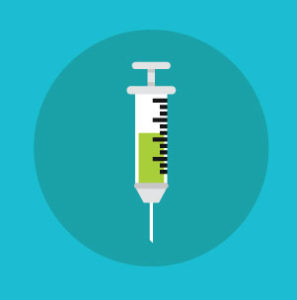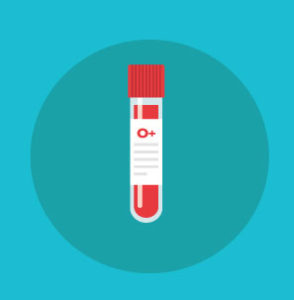
A job candidate needs a tuberculosis test, but which test do they choose — PPD test or QuantiFERON?
When choosing a tuberculosis test, a patient must consider many factors, including cost, efficiency and availability. Additionally, medical terms and acronyms associated with tuberculosis may confuse patients. For this reason, we created a Tuberculosis Test Fact Sheet. Below we outline the pros and cons of two most commonly used tuberculosis tests: Purified Protein Derivative Test (PPD) and QuantiFERONS.
- What is a PPD test?
- What are the pros and cons of PPDs?
- What is a QuantiFERON test?
- What are the pros and cons of QuantiFERON?
What is a PPD test?
During a PPD test, the patient receives a Mantoux implant under the top layer of skin on their forearm. The PPD implant contains Tuberculosis antigens called purified protein derivatives (PPD). If the patient has been exposed to the tuberculosis bacteria, a firm red bump will develop at the point of the injection within two days.

For this reason, a clinician must read the induration (patient injection area) 24-48 hours after the procedure to validate the exam. This means patients must make two office visits when doing a PPD test. Based on the size of the induration, either non-present or 5-15 mm, the clinician will make a prognosis.
Besides the inconvenience of a second visit, PPDs have a reputation of being less reliable. That’s because results rely heavily on the clinician doing the reading.
What are the pros and cons of PPDs?
Typically, the PPD implant provides the most affordable Tb test option. However, due to the required second visit for reading, the PPD may not be the most cost-effective choice. Also, false positives, one of the drawbacks of PPDs, can happen regularly. Ultimately, these drawbacks can cost you or your agency an extra week of waiting for exams.
What is a QuantiFERON test?
The QuantiFERON (QFT) blood assay tests for tuberculosis. Patients must get their blood drawn for a QuantiFERON exam. However, QFT candidates receive exam results in 48-72 hours. Compared to PPD wait times, QuantiFERON provides a sizeable advantage.
What are the pros and cons of QuantiFERON test?
The FDA-approved QFT test  contains a cocktail of three mycobacterial proteins that stimulate the patient’s T-cells in vitro to release interferon-gamma. The interferon-gamma is then measured using ELISA technology.
contains a cocktail of three mycobacterial proteins that stimulate the patient’s T-cells in vitro to release interferon-gamma. The interferon-gamma is then measured using ELISA technology.
In laymen’s terms, that means the QuantiFERON test has a high degree of reliability. It also prevents the false positive readings common with PPDs.
Though a more expensive test, the QuantiFERON on average saves 4 days of waiting time. Ultimately, that delay could cost patients a potential job or agencies a potential case.
Tags: compliance, Homecare, mantoux, ppd, quantiferon, TB skin test, TB test, TB testing


